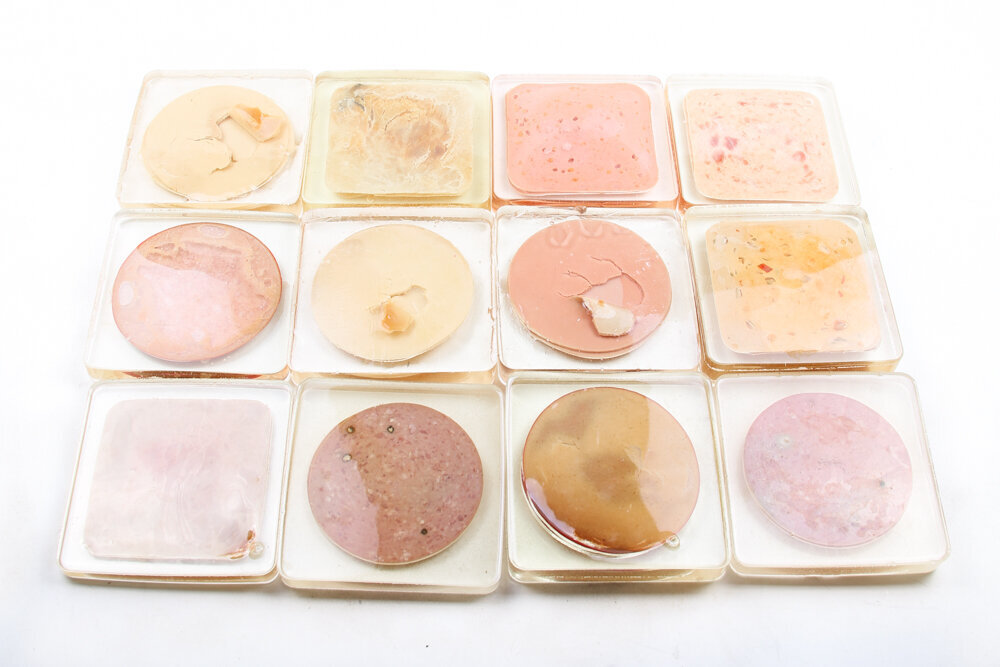MEAT STACKS
Meat Stacks compares lunch meat and office supplies to explore mass production in the meat industry. As humans, we gravitate towards convenience, often compromising the quality of food products for quantity and the ease of an extended shelf-life. With the growing abundance of processed foods, we are quickly losing touch with where our food comes from and how much "food" it actually contains. The perfectly circular sheets of bologna, neatly sealed in plastic casing and marketed by the Food Industry as "Lunch Meat,” are so removed from their natural form that all traces of the animal from which they originated have been eliminated, along with most of their nutrients and health benefits. These pre-packaged sandwich meats allow the consumer to avoid the gory reality of preparing and eating an animal, enabling easy and guilt-free consumption.


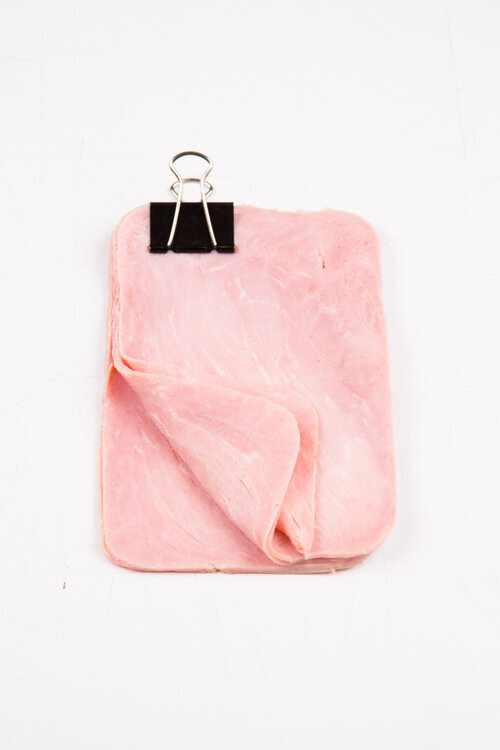
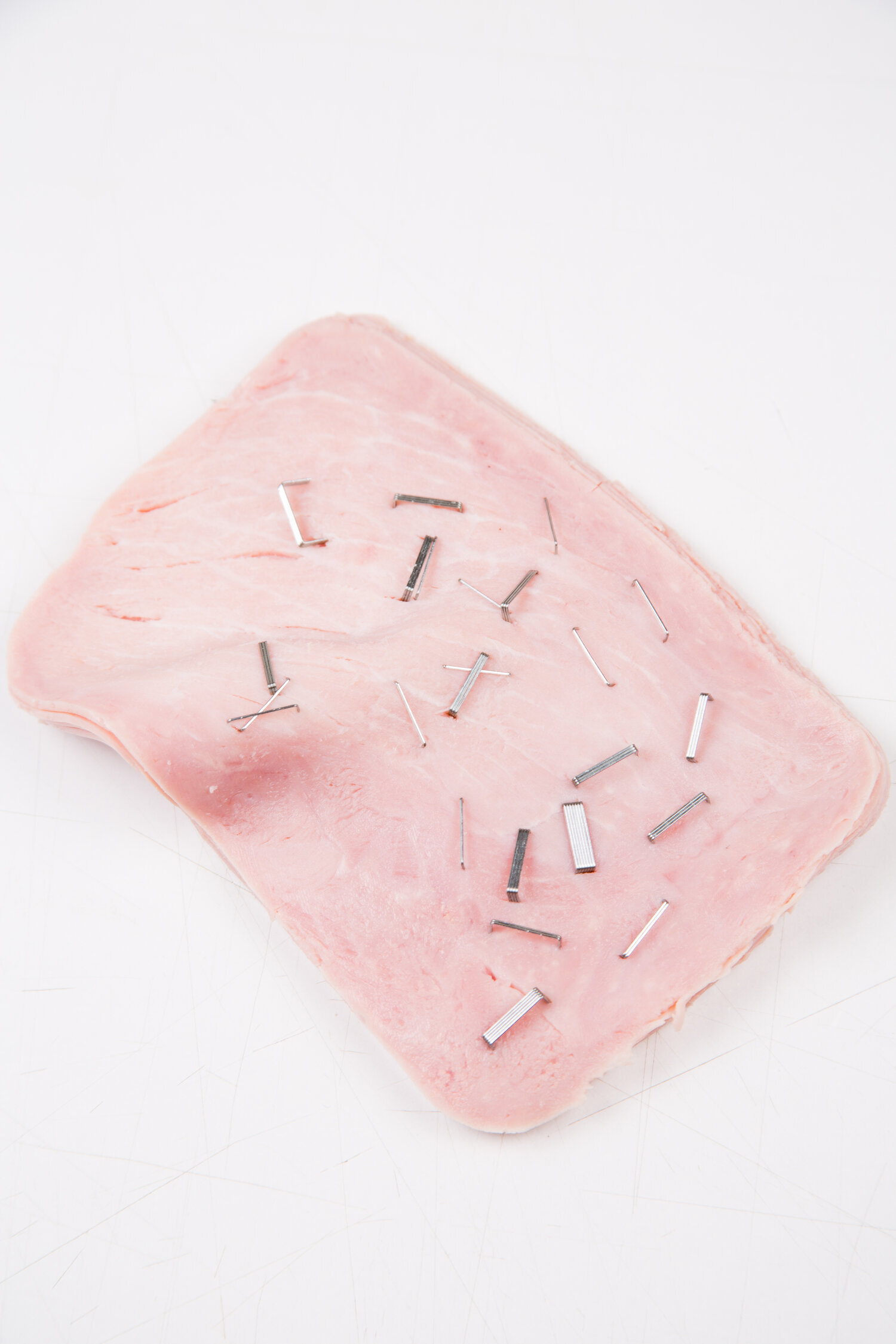
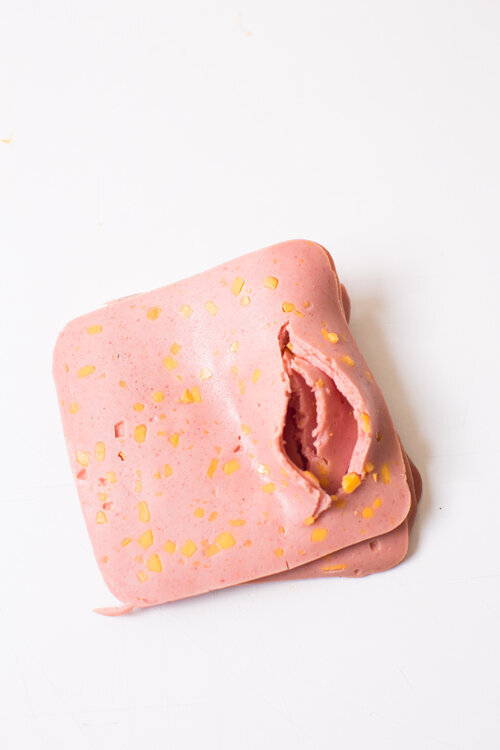
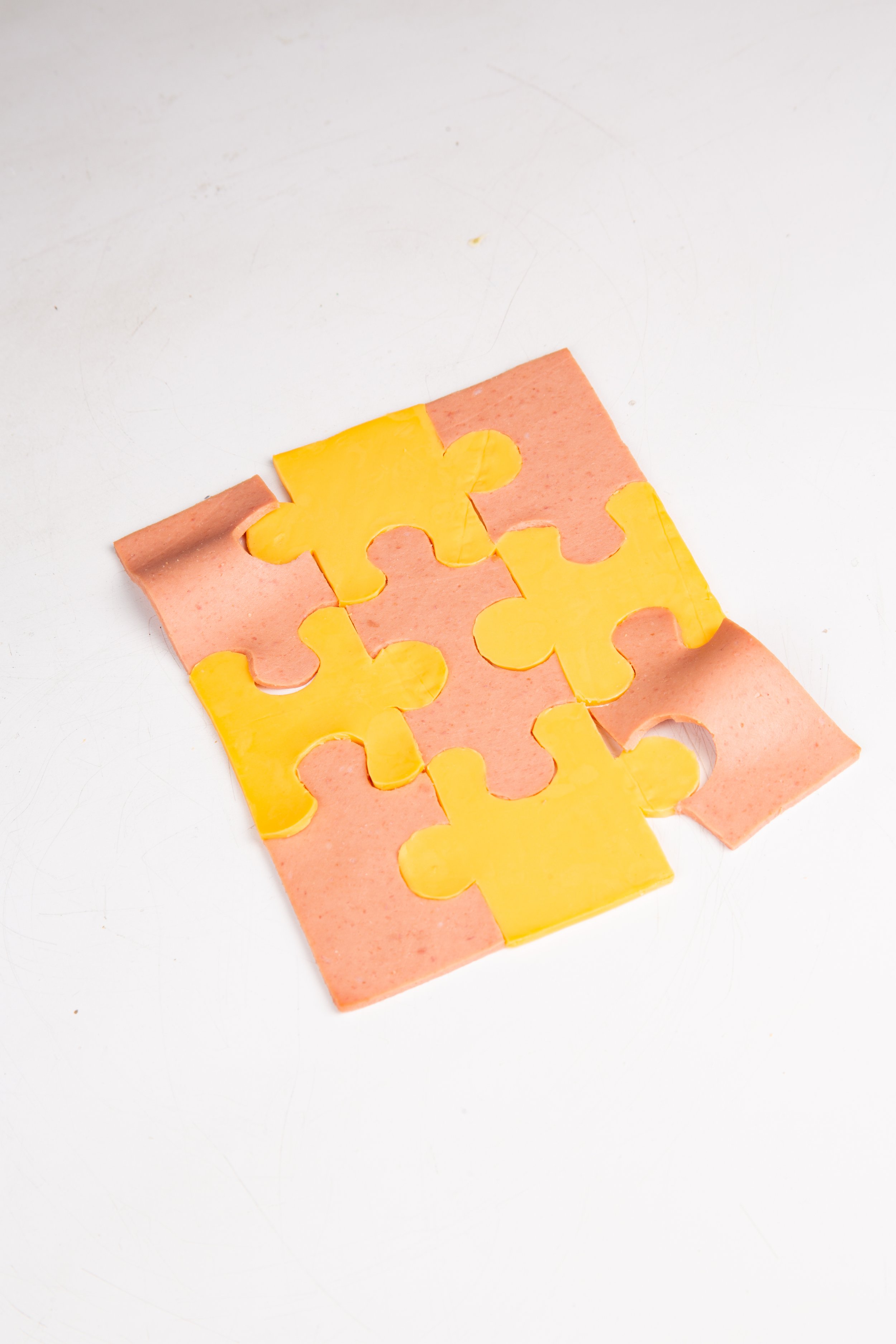
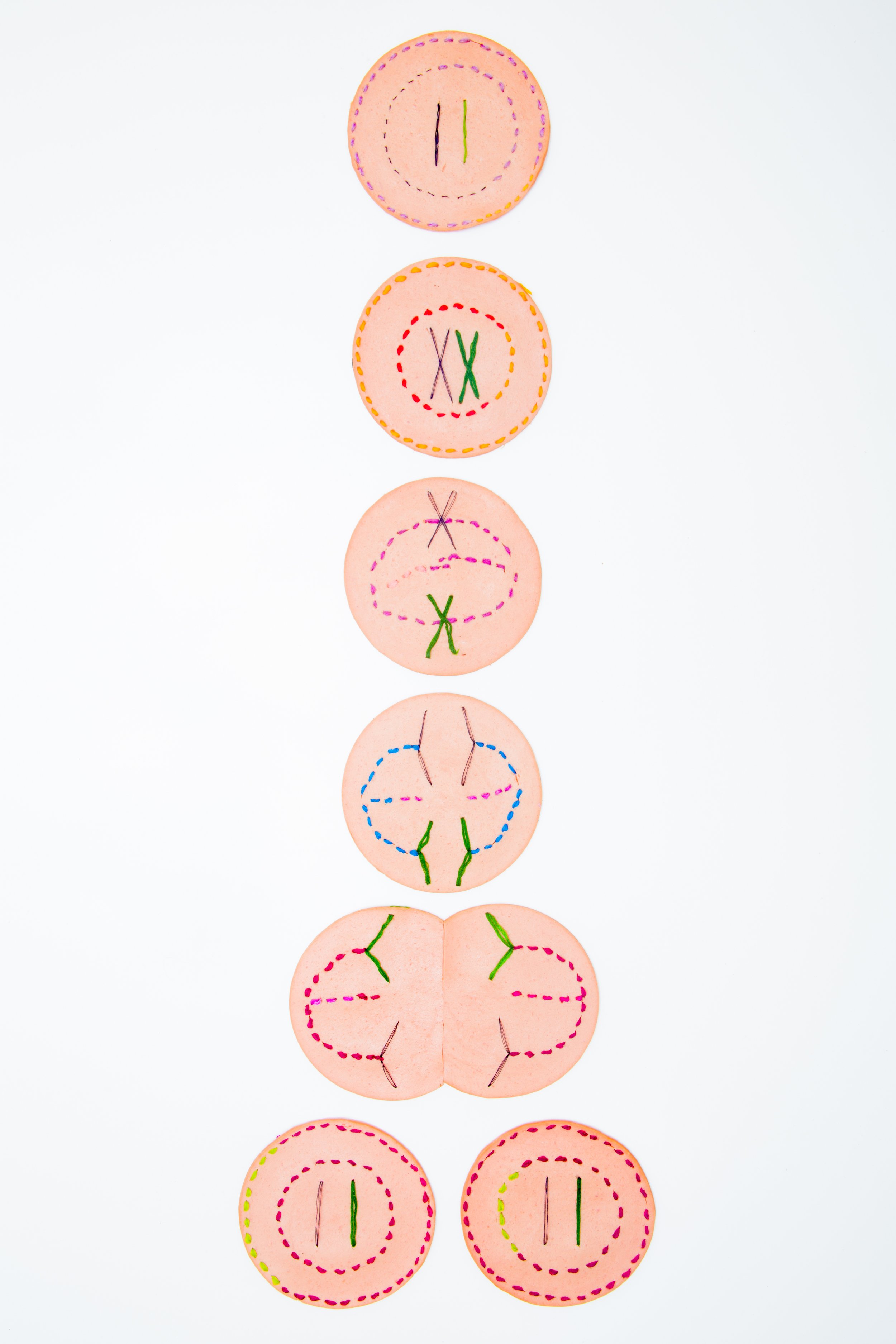

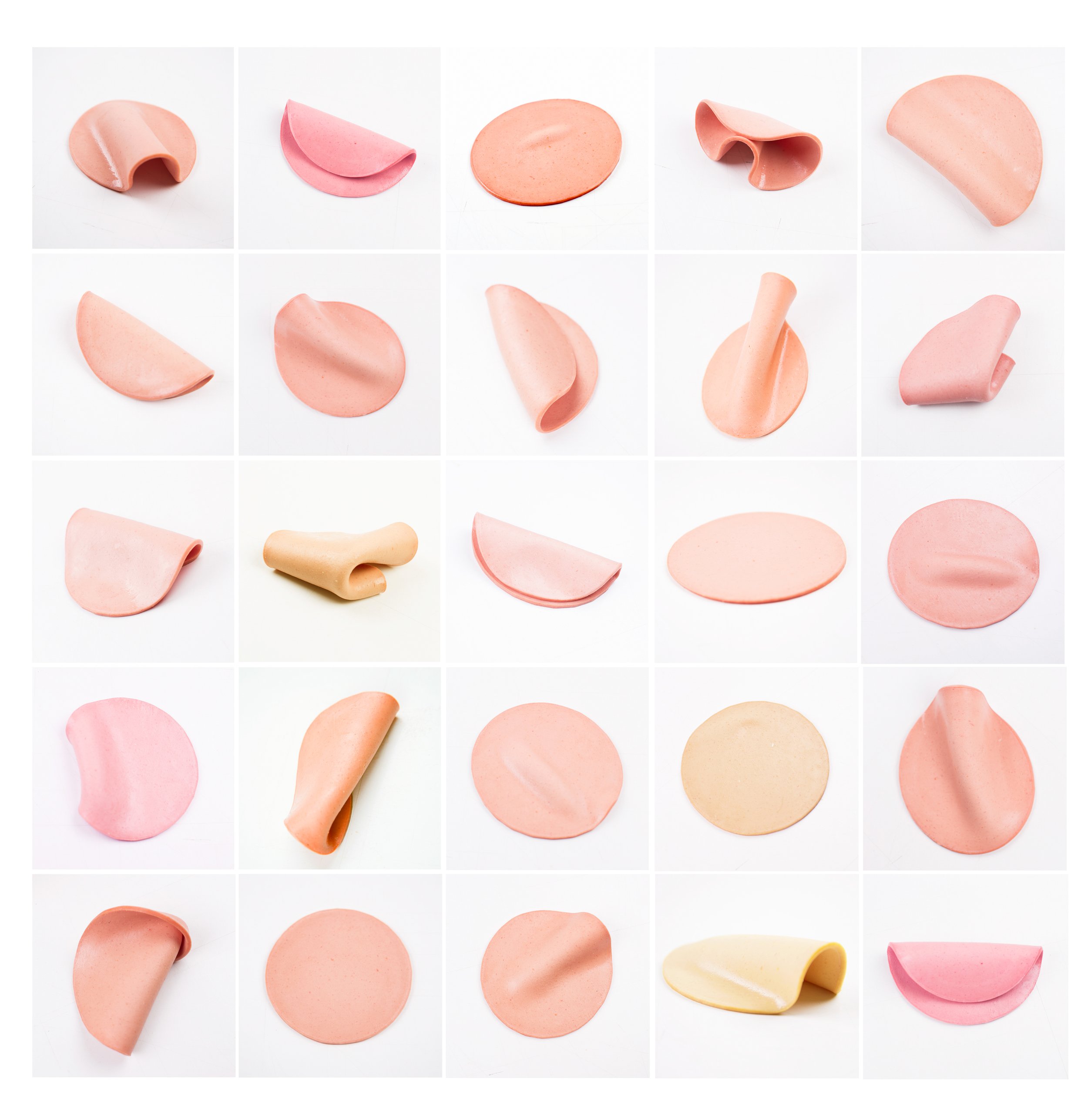


STACKS: VIDEO
MEAT UNDER THE MICROSCOPE
I made these sculptures by encasing slices of processed meat in resin, in an effort to test how long they would last. After leaving them to cure for a year, I used them as slides, and photographed them under the microscope to document the mold and bubbles that had developed under the surface of the resin over time. Below are photographs capturing the meat sculptures positioned on the microscope as well as a grid comprised of 100 photographs taken through the microscope.
INSTALLATION VIEWS
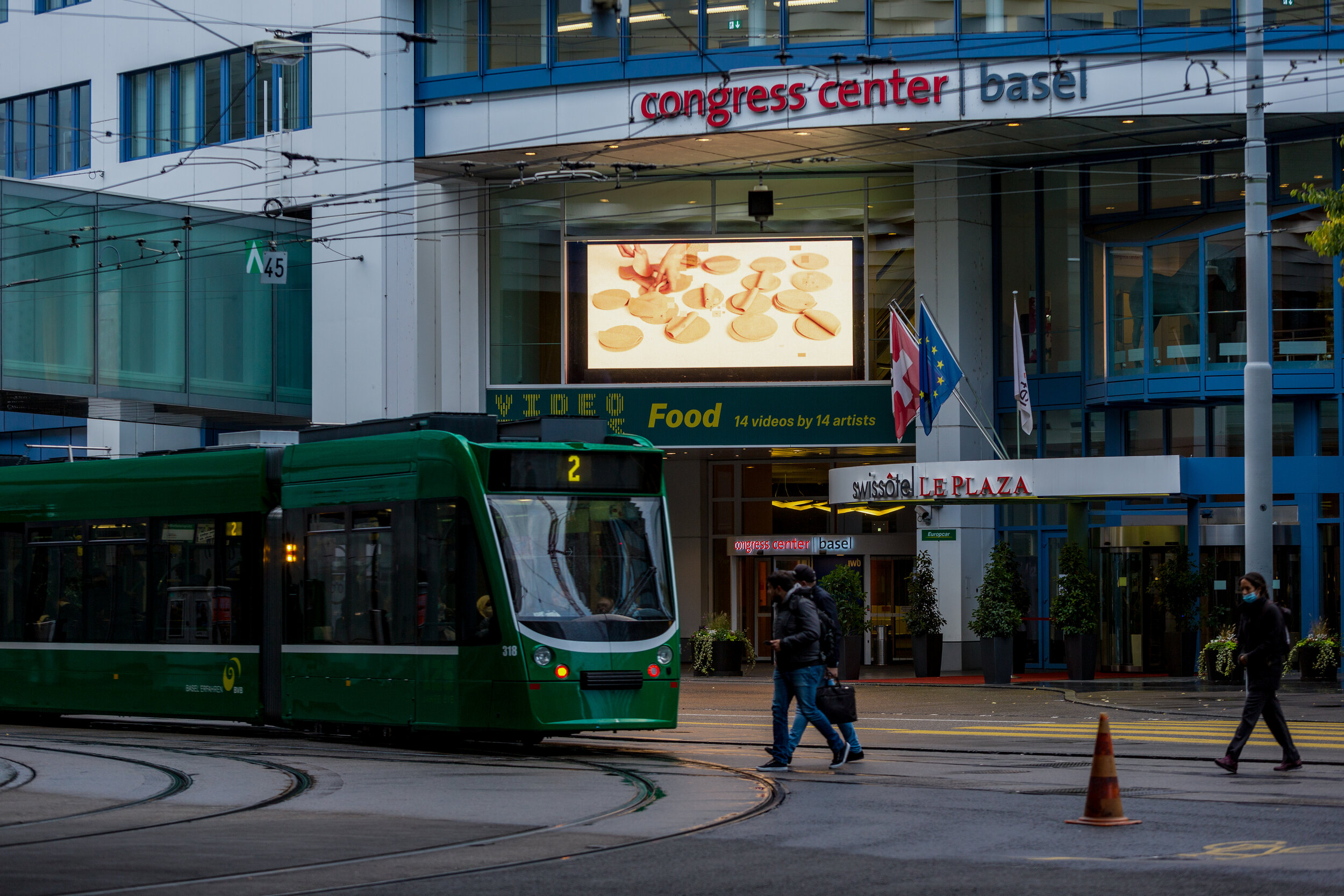
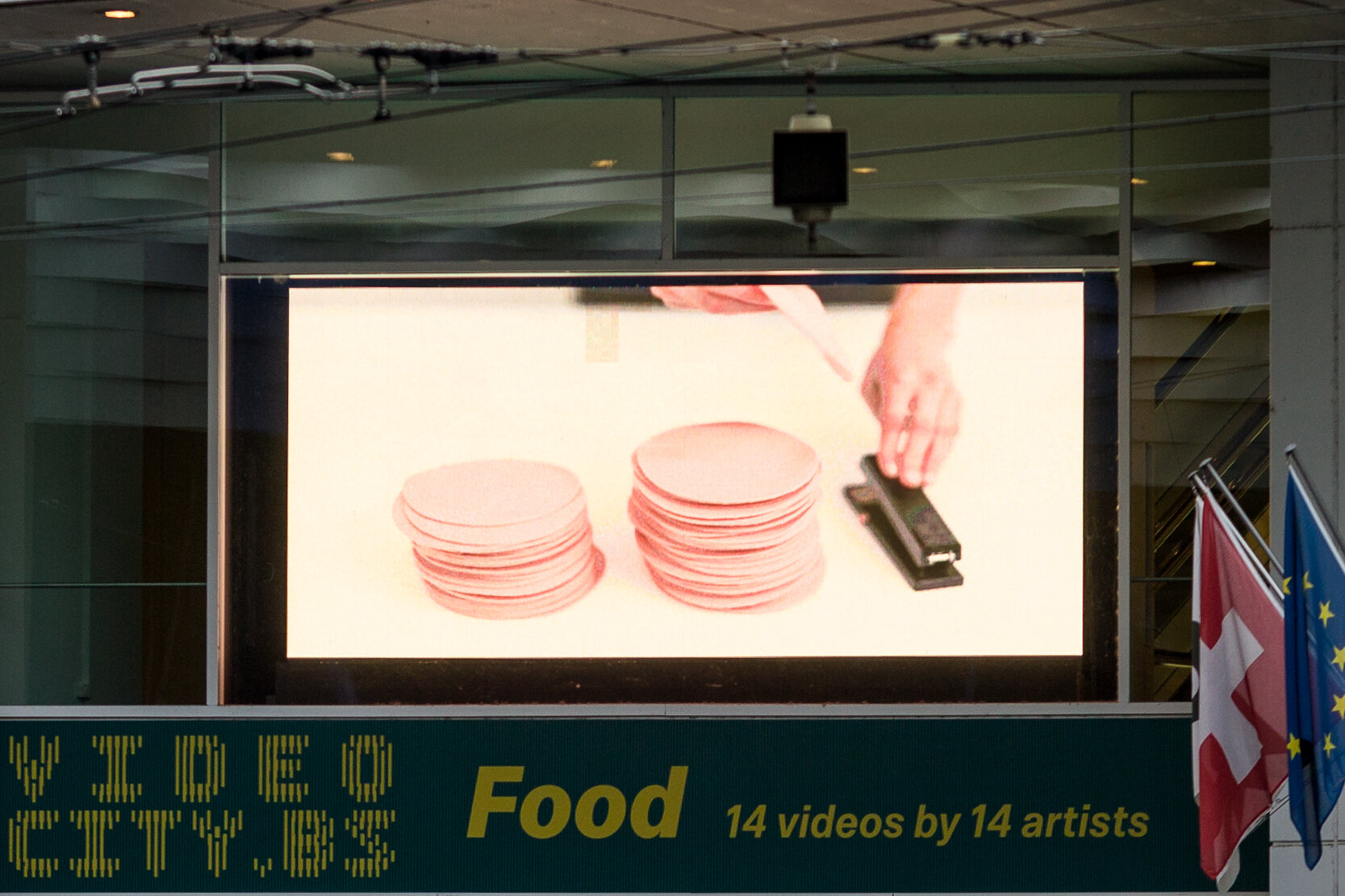

Stacks in “Food” by videocity, Congress Center, Basel, Switzerland, 2020
Exhibition curated by Dr. Andrea Domesle and Photographs by Dirk Wetzel
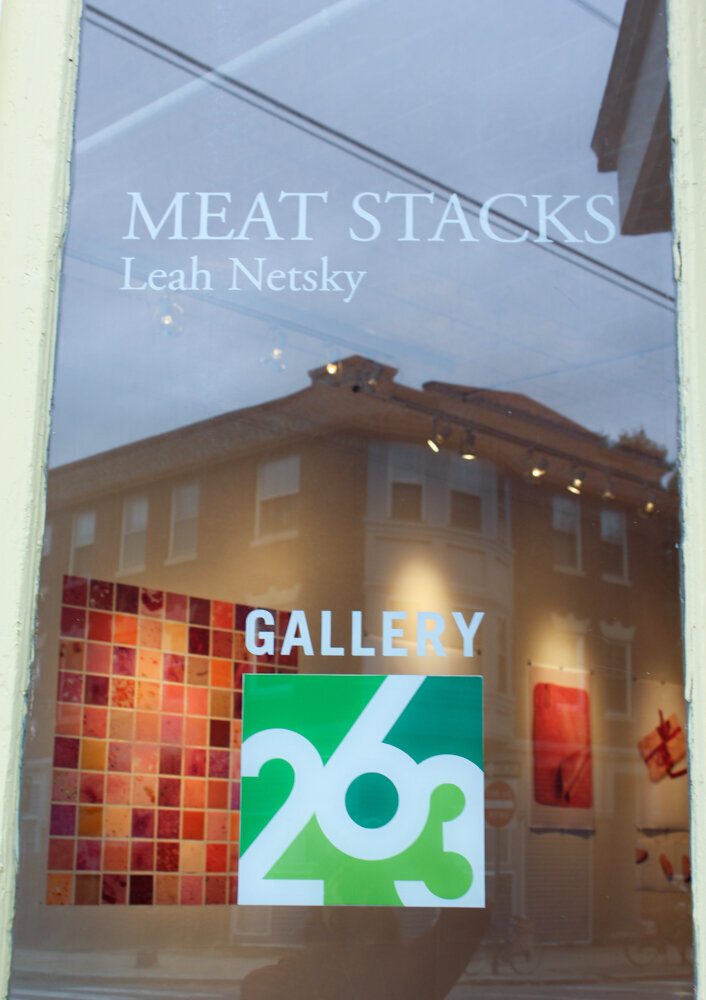
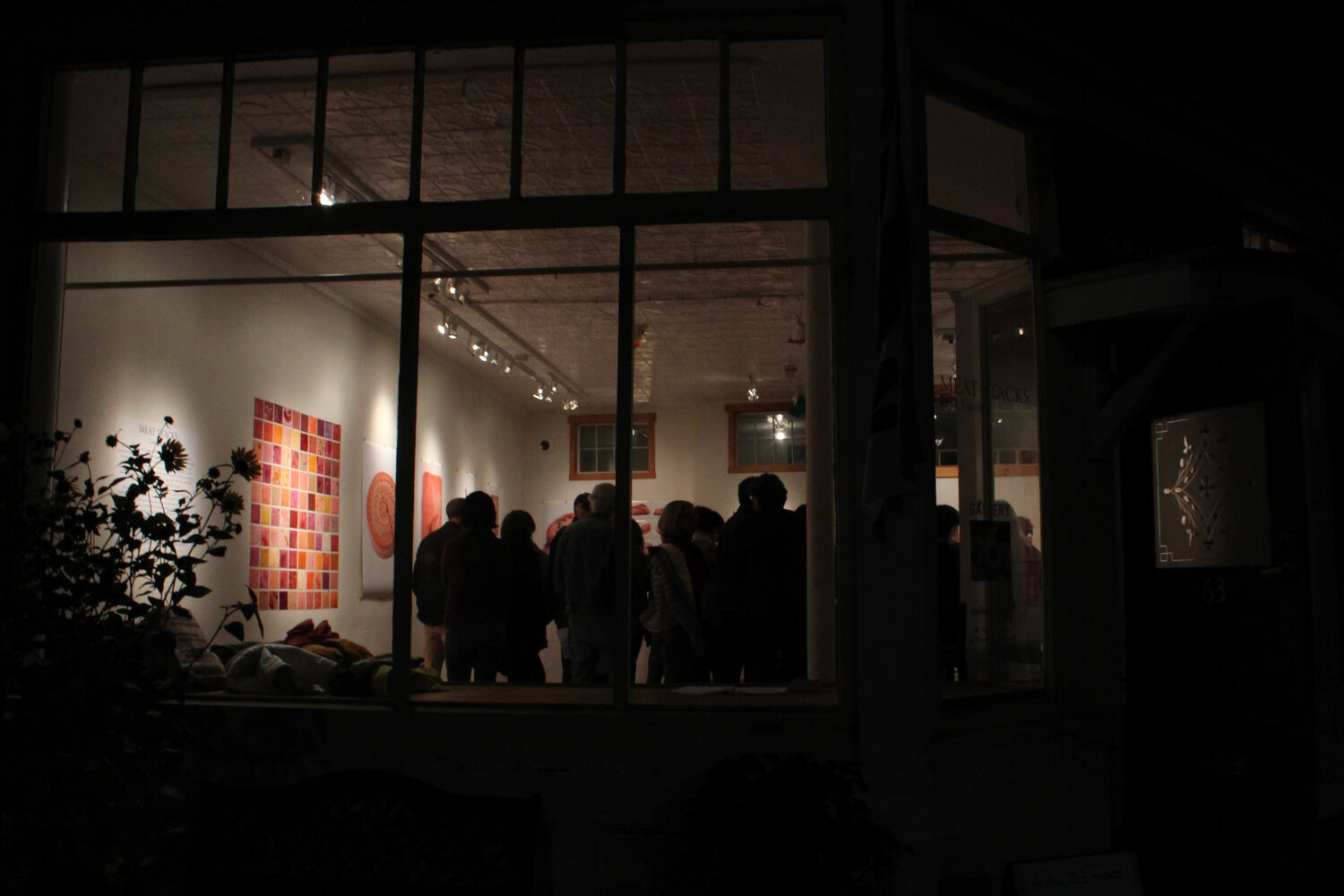
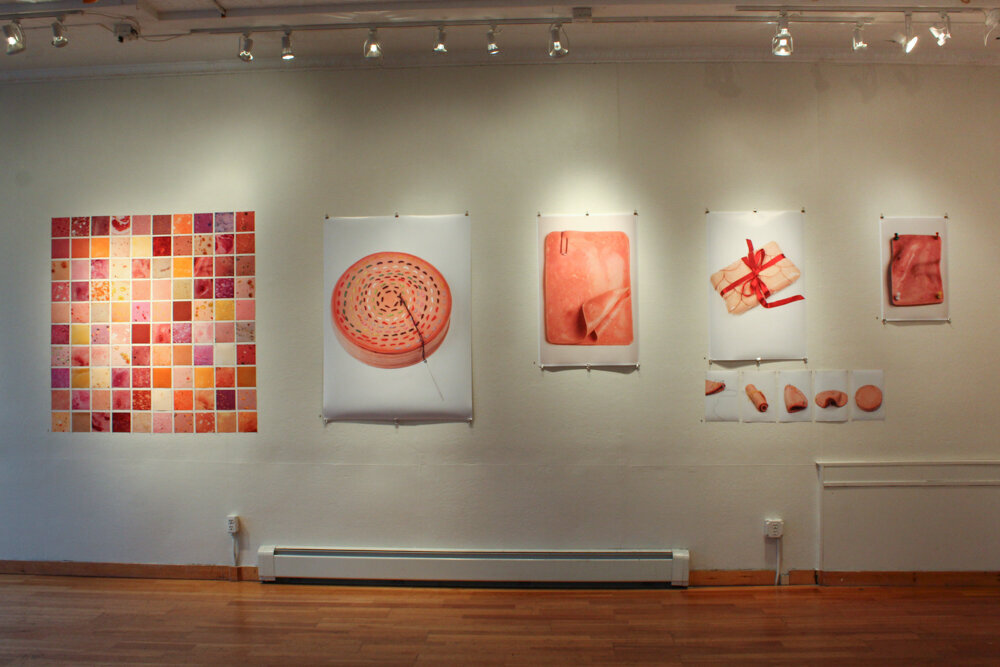
Meat Stacks, Gallery 263, Cambridge, MA, 2015

